Madame’s room; master’s room; front bedroom; guest room; dining room; lounge: the bells are labelled in the box over the kitchen door, but if you press the buttons in those rooms, no servant will come running. However, the owners of Hillside, at 3 Braemor Park in Churchtown, have given the house plenty of attention in their 29 years there, and that box symbolises the 1930s character that remains through the changes they have rung.
When seeking a family home in 1992, John and Marie had a long wish list and being, as Marie puts it, “obsessed with light”, their priority was orientation. “It’s 10-12 degrees off north/south,” says John, an engineer with a long career in construction, which means the house and garden get sun all day. This is true whether you’re having coffee on the quarry-tiled patio, accessed through a gate in the beech hedge, or breakfasting on a bench in the side garden, where an apple tree offers shade, or playing ball on the long grassy section by the sunroom.
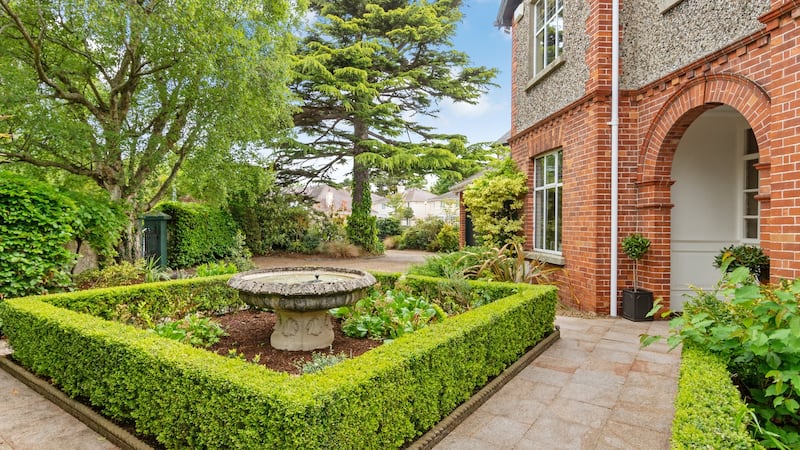
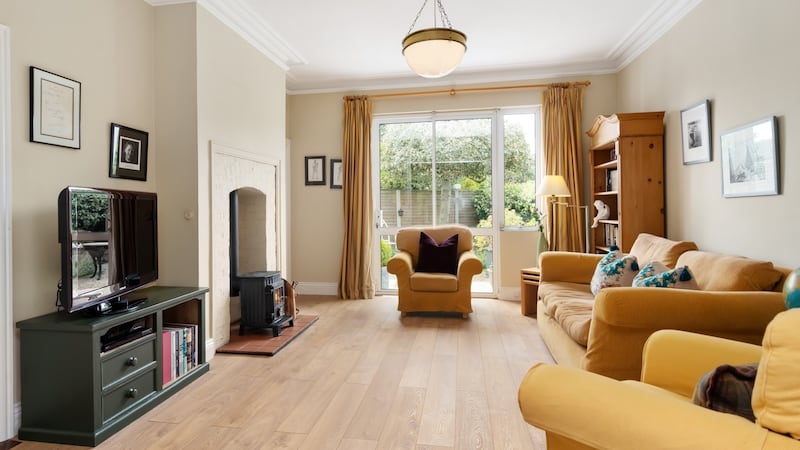
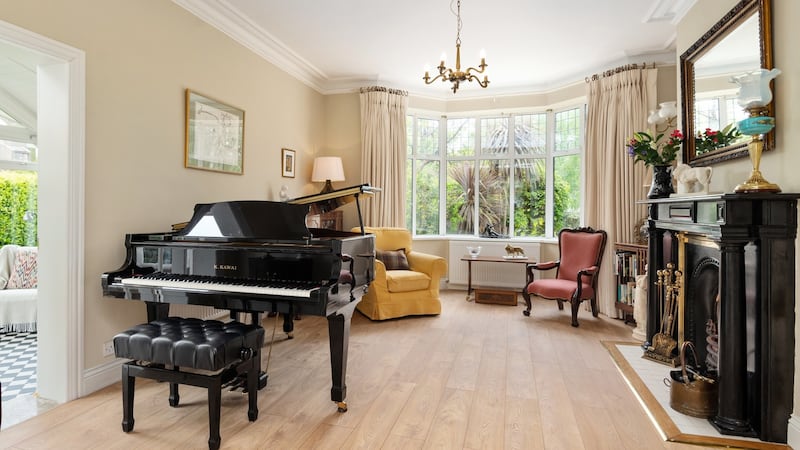
It’s also very sunny in the gravelled front driveway, screened by mature trees, where granite cobbles mark the corners of the fountain setting, highlighted by low square hedges. After a few iterations the current layout, designed by Robert Heaslip, is full of interest and is not too much work for the couple, who are downsizing.
The plot, encompassing 0.2 acres, was bought by builders Merton and Brennan and the house was first sold in 1932. Inside, the proportions of the 253sq m (2,724sq ft) home are immediately apparent; the bright square hall is floored in narrow oak planks and the front reception room to the right is lit by a bay window. There is a sombre black oolitic limestone fireplace from a salvage yard, and more heat comes through the glass door from the sunroom at the other side. This living room leads straight into the TV room, from which you can go to the hall, the garden or the kitchen.
Dining space
In the kitchen, hand-built units along the walls and in the marble-topped island are all painted white, and the brass handles reflect John’s nautical interest; he also made a cupboard out of old shutters. Off this is a dining space he designed for maximum light and minimum impact, with tall glass doors opening to the garden. At the other end, the back door leads through a long utility room that was originally a side passage and past the garage/workshop, an exercise in orderly functionality.
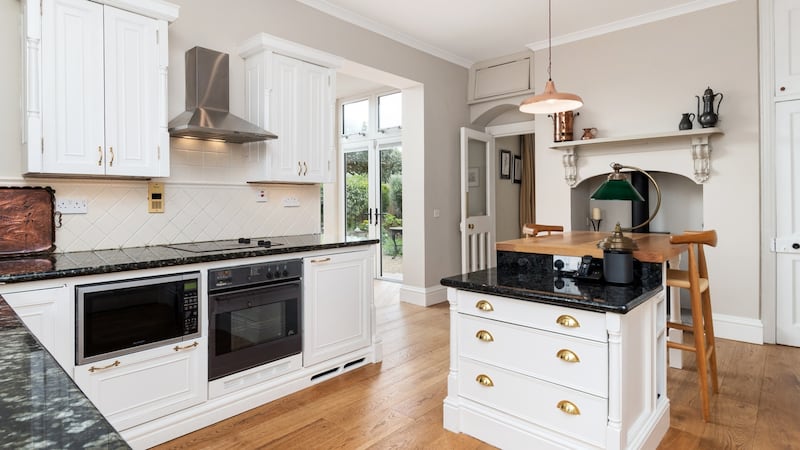
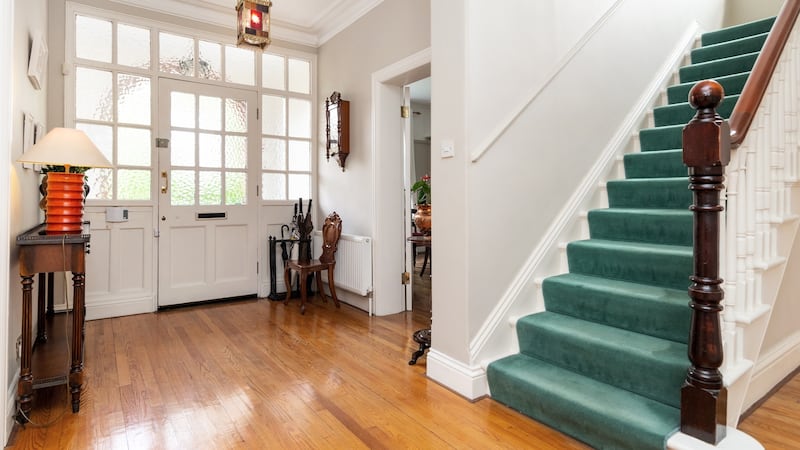
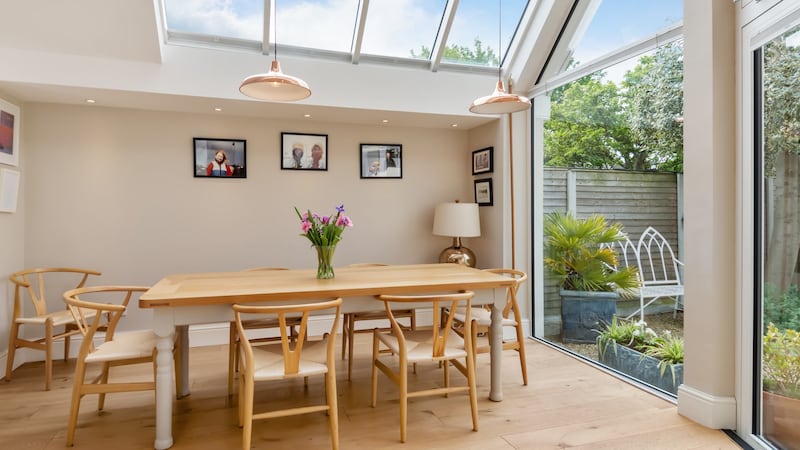
To the left off the hall there is a formal dining room that would make a fine office, with a view of all callers to the front gate. There is a smart blue bathroom under the stairs, with hidden storage. On the turn of the stairs, a double-glazed panel has been added outside the original leaded window to eliminate draughts and adding to the C3 BER, but that is not the only thing that makes it cosy; the huge landing has a very inviting aspect, and is a perfect play space. (There may be room here to build stairs if new owners opt to convert the attic, subject to planning permission.)
Off the landing, to the left, are a bathroom and a shower room that John converted from the original toilet, and a guest room with views across neighbouring gardens to the mountains; the clever design of the dining room is evident here as you can’t see into it from above, and its roof does not impede the view. A large double bedroom has the same view, along with a wooden mantelpiece and quirky bookshelves made from steel bars used in reinforced concrete.
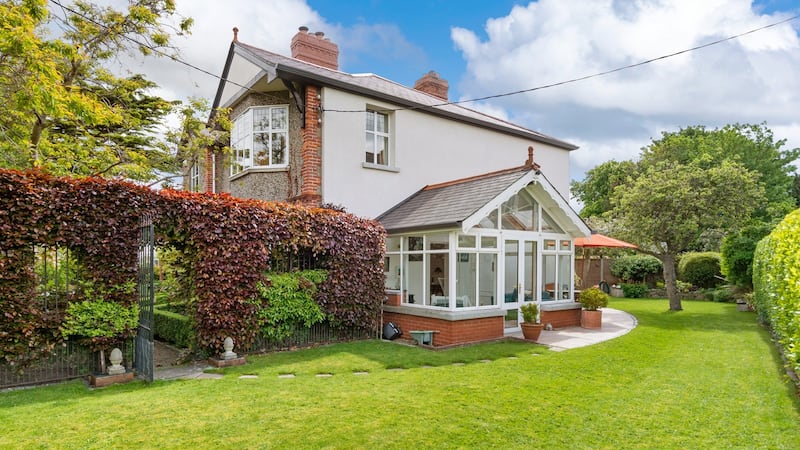
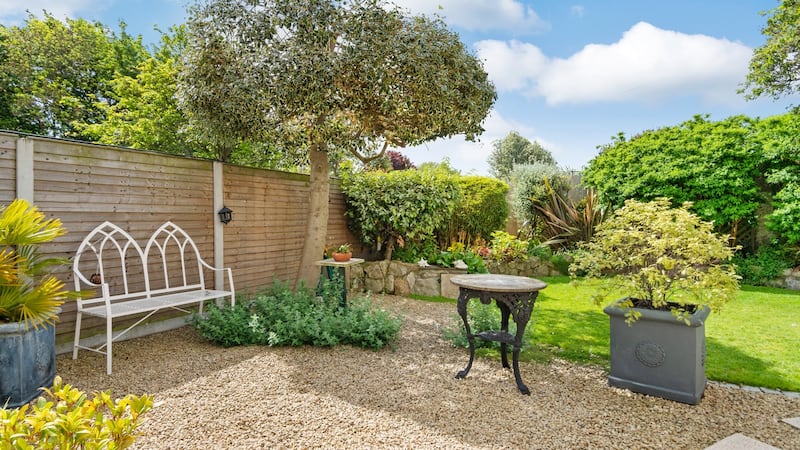
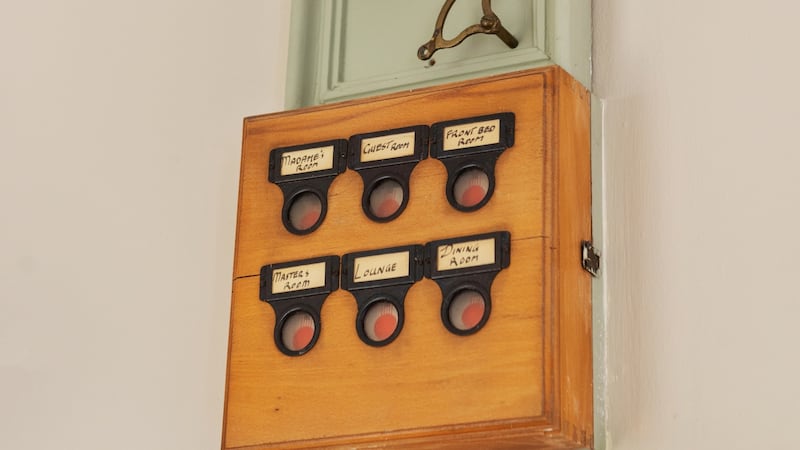
To the front, the main bedroom – whether originally that of “Madame” or “Master” is not defined – is dual aspect, with a bay window to the front and another looking across the road to Mount Carmel Community Hospital. Next is a red-painted single room used as an office, and on the other corner is what Marie calls the “morning bedroom”, full of early sunshine with a view of the majestic cypress by the front gate.
Although it is on a busy junction, just up from the river Dodder on the corner of Braemor Park and Orwell Road, the property feels very sheltered. It is for sale through DNG with an asking price of €1.75 million.












